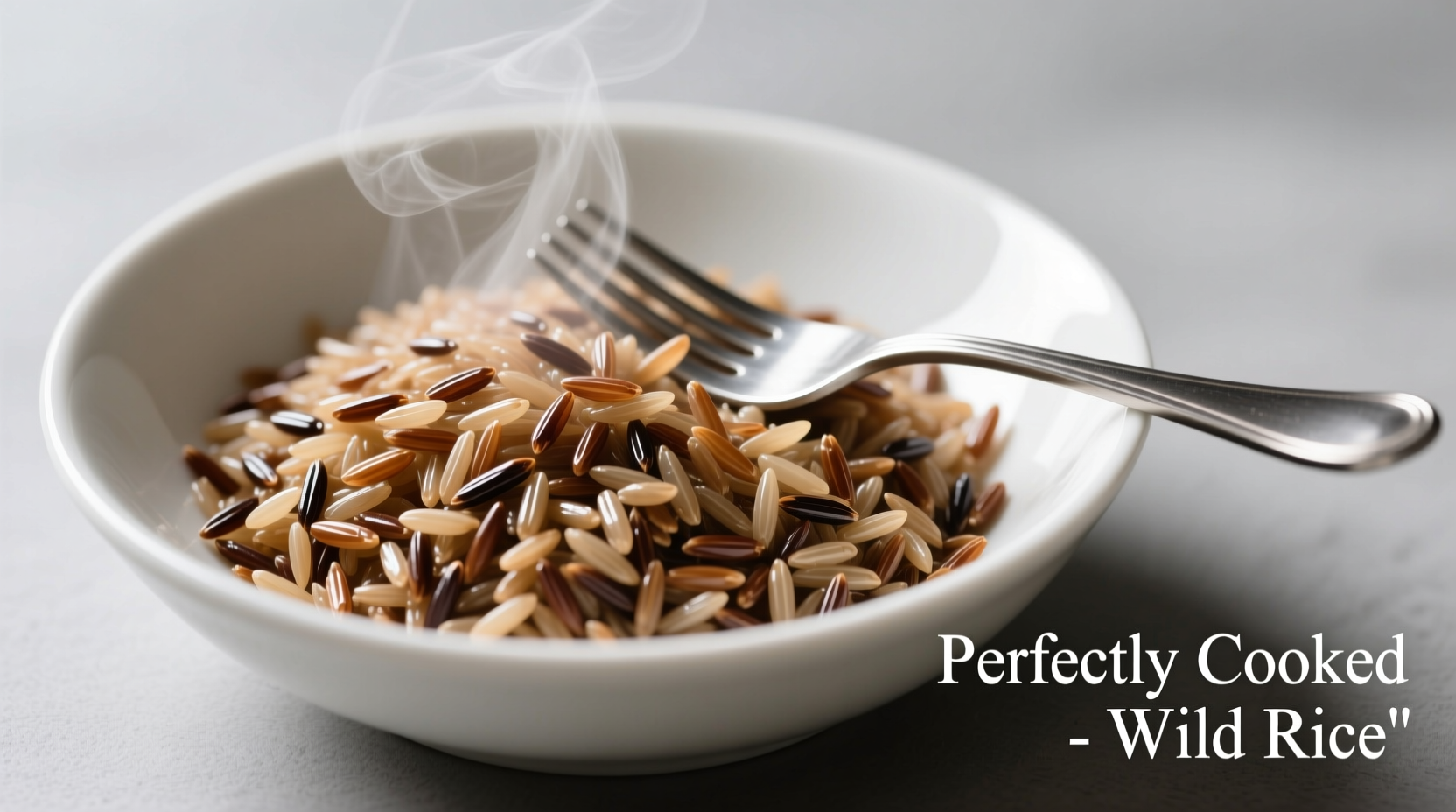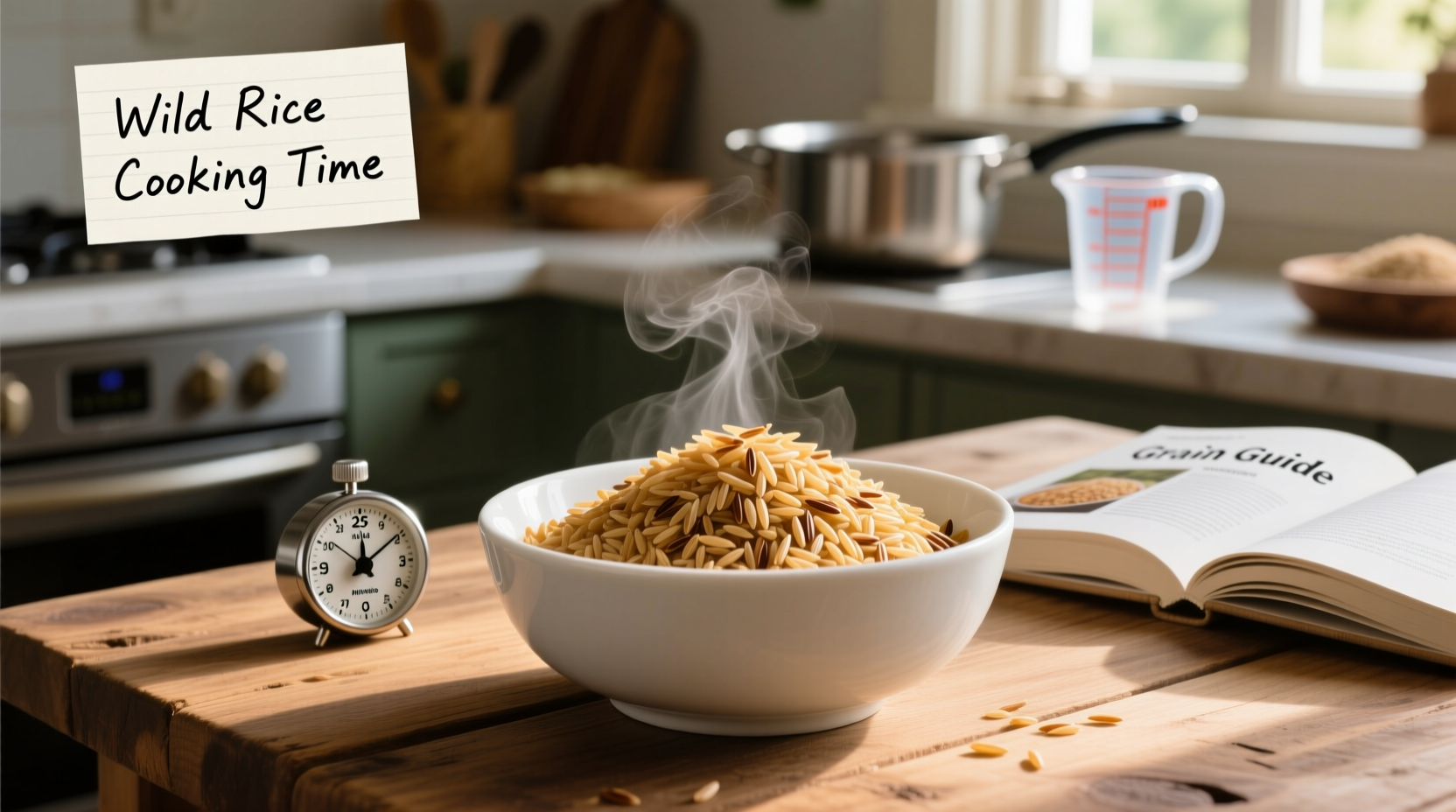Getting wild rice cooking time right separates a disappointing meal from a restaurant-quality side dish. Many home cooks make the mistake of treating wild rice like its more common cousin, white rice, resulting in unpleasantly crunchy grains that never fully soften. The truth is, wild rice's unique structure demands specific timing and technique.
Why Wild Rice Cooking Time Matters
Wild rice isn't actually rice at all—it's the seed of a semi-aquatic grass native to North America. This botanical difference explains why it behaves so differently in the cooking process. The tough outer bran layer protects the inner grain, requiring significantly longer cooking than white or even brown rice.
Undercooked wild rice remains unpleasantly hard and chewy, while overcooked wild rice loses its distinctive texture and becomes mushy. The ideal cooked wild rice should be tender but still pleasantly chewy, with grains that have split open to reveal the inner white portion.
Standard Cooking Times by Method
Different cooking methods yield different results, but all require more time than regular rice. Based on testing from the University of Minnesota Extension—which makes sense since wild rice is Minnesota's official state grain—the following times produce optimal results:
| Cooking Method | Water-to-Rice Ratio | Simmering Time | Total Time |
|---|---|---|---|
| Stovetop (covered) | 3:1 to 4:1 | 45-60 minutes | 55-70 minutes |
| Instant Pot/Pressure Cooker | 2:1 | 22-25 minutes | 35-40 minutes |
| Rice Cooker | 3:1 | 50-60 minutes | 60-70 minutes |
| Oven (covered) | 3:1 | 45-55 minutes | 55-65 minutes |
According to America's Test Kitchen research, the 45-60 minute range represents the sweet spot where wild rice develops its characteristic nutty flavor while achieving the ideal texture. Cooking for less than 45 minutes typically leaves the grains too hard, while exceeding 60 minutes often results in mushiness.
Step-by-Step Stovetop Cooking Guide
The stovetop method remains the most reliable approach for perfect wild rice. Follow these professional chef-tested steps:
- Rinse thoroughly - Place 1 cup wild rice in a fine-mesh strainer and rinse under cold water for 30 seconds to remove any dust or debris
- Toast for flavor - Optional but recommended: Heat 1 teaspoon oil in a saucepan over medium heat, add rinsed rice, and toast for 2-3 minutes until fragrant
- Add liquid - Pour in 3-4 cups water or broth (use 3 cups for firmer rice, 4 cups for softer)
- Bring to boil - Increase heat to high and bring to a rolling boil
- Simmer covered - Reduce heat to low, cover tightly, and simmer for 45-60 minutes
- Check periodically - After 45 minutes, check a few grains; they should be tender with a slight chew
- Rest off heat - Once cooked, remove from heat and let stand covered for 10 minutes
- Fluff and serve - Use a fork to fluff the rice, separating the grains gently
Visual Cues for Perfectly Cooked Wild Rice
Timing provides a good guideline, but visual and textural cues matter most. Perfectly cooked wild rice should show these characteristics:
- Split grains - Most grains will have split open to reveal the pale interior
- Chewy texture - Should offer slight resistance when bitten but not be crunchy
- No hard center - When bitten, there shouldn't be an uncooked white dot in the center
- Distinct grains - Individual grains should remain separate, not clumped together
As noted in the USDA's Complete Guide to Dry Beans and Legumes, wild rice's cooking behavior varies slightly based on growing conditions and processing methods. This explains why package instructions sometimes differ from general guidelines.
Troubleshooting Common Issues
Problem: Rice still crunchy after 60 minutes
Solution: Add ¼-½ cup additional hot water, cover, and cook another 5-10 minutes. Wild rice from certain regions may require additional time.
Problem: Mushy, overcooked rice
Solution: Reduce water ratio next time. For current batch, spread on a baking sheet to dry slightly while cooling.
Problem: Uneven cooking
Solution: Ensure consistent simmering temperature and use a heavy-bottomed pot that distributes heat evenly.
Storage and Reheating Tips
Cooked wild rice keeps well in the refrigerator for 5-7 days or in the freezer for up to 6 months. When reheating:
- For microwave: Place in microwave-safe dish with 1-2 tablespoons water, cover, and heat 1-2 minutes
- For stovetop: Add to small saucepan with 2 tablespoons water or broth, cover, and heat over medium-low for 3-5 minutes
- For salads: No reheating needed—wild rice actually improves when chilled and dressed
Pro tip: Cook wild rice in broth instead of water for enhanced flavor, or add aromatics like bay leaves, garlic, or fresh herbs during cooking for additional depth.

Why Wild Rice Takes Longer Than Other Grains
The extended cooking time relates directly to wild rice's biological structure. Unlike milled white rice that has had its bran and germ removed, wild rice retains its tough outer hull. This protective layer requires prolonged exposure to heat and moisture to soften properly.
Research from the University of California's Department of Plant Sciences confirms that wild rice's cellulose-rich outer layer creates a natural barrier that slows water absorption. This structural characteristic is precisely what gives cooked wild rice its distinctive chewy texture and nutty flavor profile.
Frequently Asked Questions
Should I soak wild rice before cooking?
Soaking isn't necessary but can reduce cooking time by 10-15 minutes. If you choose to soak, use 2 parts water to 1 part rice for 4-8 hours, then drain before cooking with fresh water.
Can I cook wild rice in a rice cooker?
Yes, but use the brown rice setting if available. Wild rice requires more water and time than white rice, so adjust accordingly—typically 3 cups water to 1 cup rice with a 50-60 minute cooking cycle.
Why does my wild rice take longer than package instructions say?
Package instructions often provide conservative estimates. Actual cooking time varies based on rice age, altitude, and your specific stove's heat output. Always rely on visual and textural cues rather than strict timing.
How can I tell when wild rice is done without tasting?
Look for the characteristic "X" shape that forms when the grains split open. Most grains should have popped open to reveal the pale interior while maintaining their structural integrity.











 浙公网安备
33010002000092号
浙公网安备
33010002000092号 浙B2-20120091-4
浙B2-20120091-4